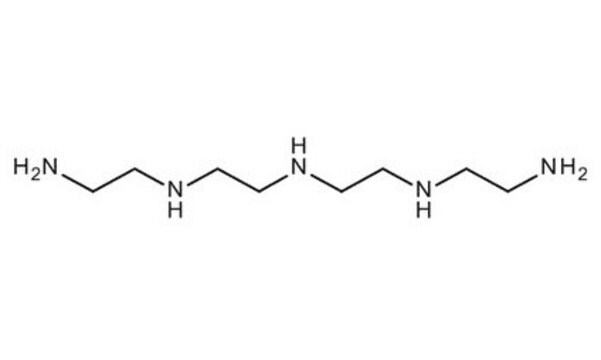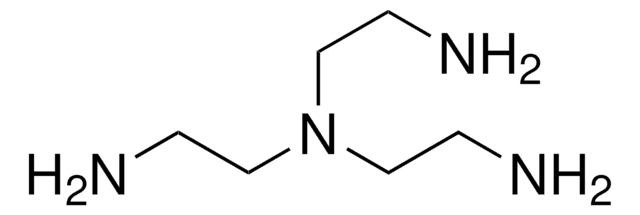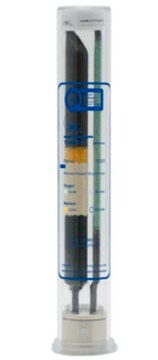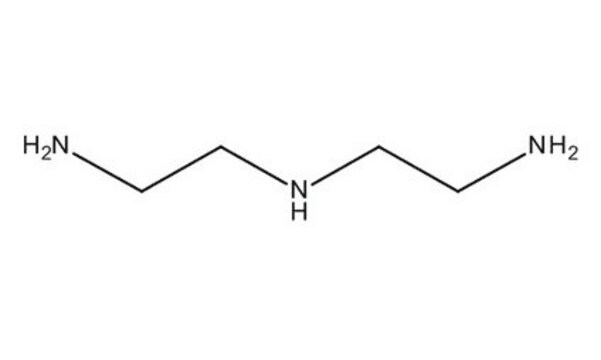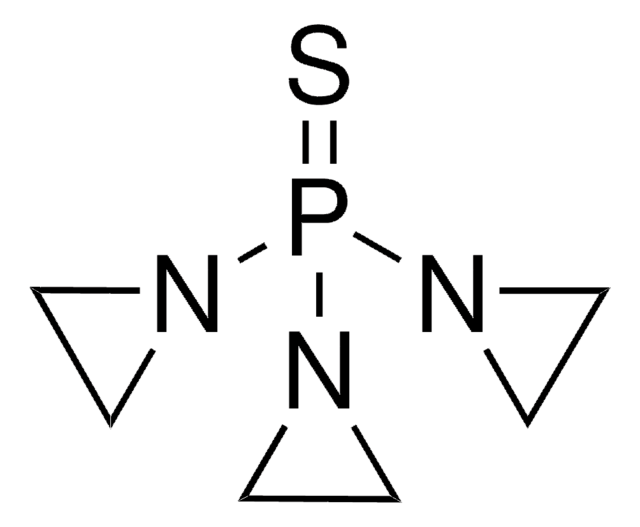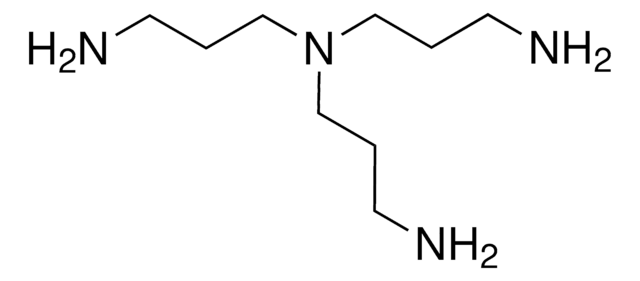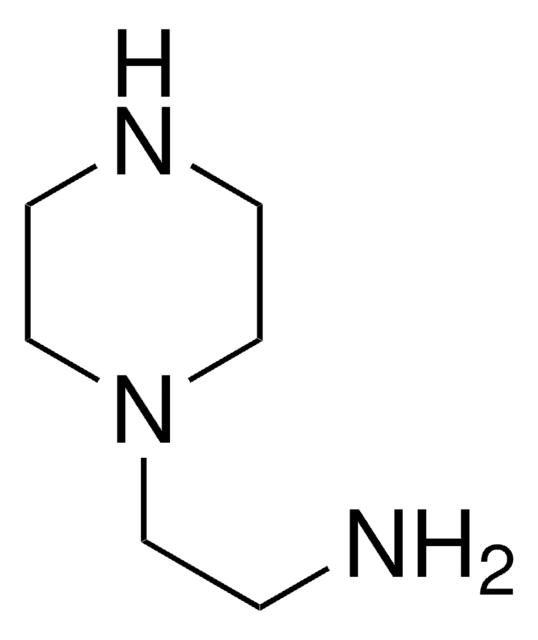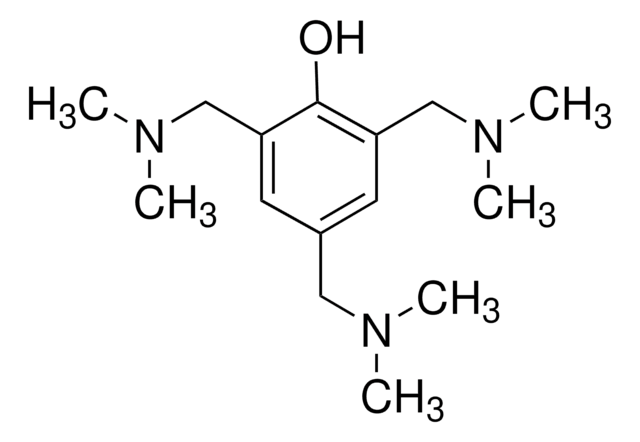T11509
Tetraethylenepentamine
technical grade
Sinonimo/i:
TEPA, Tetrene
About This Item
Prodotti consigliati
Grado
technical grade
Livello qualitativo
Densità del vapore
6.53 (vs air)
Tensione di vapore
<0.01 mmHg ( 20 °C)
Temp. autoaccensione
610 °F
Indice di rifrazione
n20/D 1.505 (lit.)
P. ebollizione
340 °C
Punto di fusione
−40 °C (lit.)
Densità
0.998 g/mL at 25 °C (lit.)
Stringa SMILE
NCCNCCNCCNCCN
InChI
1S/C8H23N5/c9-1-3-11-5-7-13-8-6-12-4-2-10/h11-13H,1-10H2
FAGUFWYHJQFNRV-UHFFFAOYSA-N
Cerchi prodotti simili? Visita Guida al confronto tra prodotti
Categorie correlate
Descrizione generale
Applicazioni
- To functionalize magnesium 2,5-dihydroxyterephthalate (Mg-MOF-74) to enhance the CO2 adsorption performance of the material.
- To modify magnetic chitosan resin to form amine-bearing chitosan for the efficient removal of uranium from an aqueous solution.
- To synthesize poly(vinyl-chloride)/tetraethylenepentamine (PVC-TEPA) composite material, which is used as an efficient catalyst for the Knoevenagel condensation reaction.
Avvertenze
Danger
Indicazioni di pericolo
Consigli di prudenza
Classi di pericolo
Acute Tox. 4 Dermal - Acute Tox. 4 Oral - Aquatic Chronic 2 - Eye Dam. 1 - Skin Corr. 1B - Skin Sens. 1
Codice della classe di stoccaggio
8A - Combustible corrosive hazardous materials
Classe di pericolosità dell'acqua (WGK)
WGK 2
Punto d’infiammabilità (°F)
325.4 °F - closed cup
Punto d’infiammabilità (°C)
163 °C - closed cup
Dispositivi di protezione individuale
Faceshields, Gloves, Goggles, type ABEK (EN14387) respirator filter
Scegli una delle versioni più recenti:
Possiedi già questo prodotto?
I documenti relativi ai prodotti acquistati recentemente sono disponibili nell’Archivio dei documenti.
I clienti hanno visto anche
Il team dei nostri ricercatori vanta grande esperienza in tutte le aree della ricerca quali Life Science, scienza dei materiali, sintesi chimica, cromatografia, discipline analitiche, ecc..
Contatta l'Assistenza Tecnica.